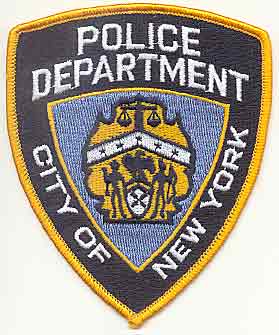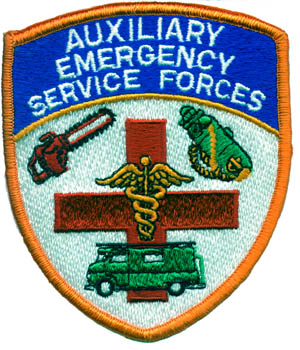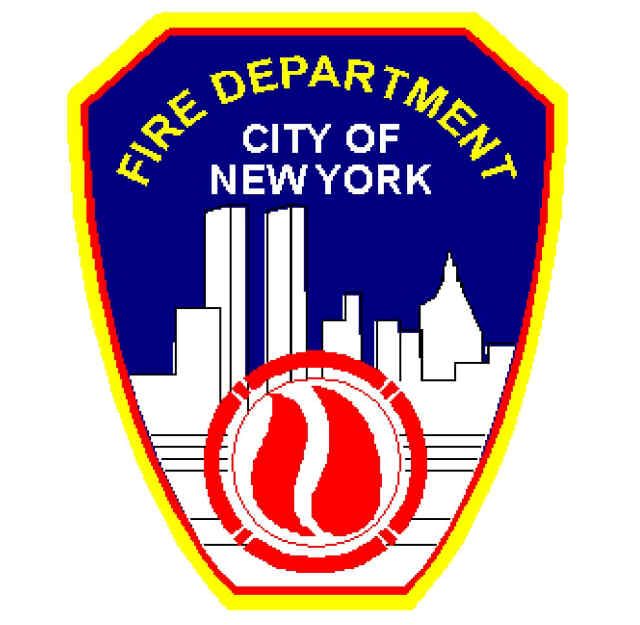Other Coney Island Emergency Services
 NYPD- 60, 61, 62, 70 Precinct; ESU 6 and 8; Housing PSA 1; Transit D34
NYPD- 60, 61, 62, 70 Precinct; ESU 6 and 8; Housing PSA 1; Transit D34While this website is primarily documenting the history of The Coney Island Ambulance Station, we did not exist in a vacume. For decades, NYPD Officers assigned to the 60, 61,62 and 70 Precincts, Housing PSA 1, Transit District 34 and Emergency Serrvice Trucks 6 and 8 were routinely dispatched simultaneously to ambulance calls. Aside from their primary duties of investigating crimes, documenting motor vehicle accidents, and making notifications to families of patients transported, many of us developed very close working relationships with these officers. Long before FDNY Engines would start First Responder duties to ambulance calls in the 90's, it was these officers that often went far beyond their normal duties in assisting Coney Islands' EMS Units. They would frequently assist with carrying patients, performing CPR, gathering patient histories and medications. During a brief period in the early 90's, a select group of 60 Precinct Officers who were also Emergency Medical Technicians were among the first units equipped with Automatic External Defibrillators to enhance their capabilities responding to the huge number of Cardiac calls within the precinct.
Despite all these "official duties" the aspect of their response to ambulance calls which we most appreciated was their attitude toward EMS crew safety. During the 80's, members of Medic 385 made arrangements with the 61 Precinct to sign out PD radios on every shift. Tenth Division Paramedics could often be heard, called over PD radio. This concept was so successful, it spread throughout the city as other units made similar arrangements with their precincts. Eventually EMS had the NYPD frequencies installed in our own radios, insuring they were always available.
This was a tremendous asset to both services , assisting EMS crews in reaching critical patients faster, and allowing Officers to directly request an EMS response when they encountered a critical patient. Without this ability for direct communication between units, messages often were lost, changed or incorrectly prioritized thru the phone and computer links between EMS and NYPD . Both services realized they they were ultimately codependent for each others survival at a time when the risk of shootings and assaults on PD and EMS were very high. The safety of EMS monitoring the radio during PD responses, and our ability to have a rapid and clear response of Police when we were in trouble, greatly enhanced each others personal saftey.
|
|
|
 61 RESCUE- Auxiliary PD
61 RESCUE- Auxiliary PD
Several nights a week during the 80's and 90's, this group of volunteers patrolled Broklyn South, frequently responding to MVA's and ambulance calls. The Auxiliary program, initiated during the 60's as a unit of the Civil Defense program, continues within NYPD with the objectives of providing additional unarmed patrol, crowd and traffic control at mass gatherings, and as a unit which can be called upon and granted Peace Officer status in event of a major disaster. The Auxiliary Rescue Units are additionally trained as Emergency Medical Technicians and in various rescue techniques. Their trucks are equipped with many of the same rescue and extrication tools( albeit older versions) found on the NYPD Emergency Service trucks.
The original REO Speedwagon was replaced in 2000, and redesignated as a Patrol Support Unit, continuing to patrol the area.
Volunteer Ambulance Corps
|
|
|
SHOREFRONT COMMUNITY VOLUNTEER AMBULANCE CORPS
FLATLANDS VOLUNTEER AMBULANCE CORPS
BENSONHURST VOLUNTEER AMBULANCE CORPS
GERRITSEN BEACH VOLUNTEER FIRE DEPARTMENT
BRAVO
HATZOLOH VOLUNTEER AMBULANCE
The relationship between EMS units and the volunteer ambulances serving the area has varied from ice cold to very warm over the years, often depending upon the specific crews involved. During the 70's municipal crews often felt resentment that the existence of these ambulances was one reason the city failed to fund and staff additional municipal units. With these units picking up some of the call volume, it threatened union job security as well as salary levels. Others, including myself, felt that this animosity was misplaced, and the reality was these units handled a very small proportion of the call volume. It was simply the city's practice , which continues to date, to fail to recognize the significance of their EMS service, to negotiate in good faith or pay their employees their worth unless forced to do so. My opinion remains unchanged 35 years later.
However the other aspect that I do believe valid is the wide variance in training, experience and staffing of these volunteer units. Many individual EMT with these services will only respond to 1 or 2 calls/month..never having the opportunity to master this profession. Some failed to make training and education a priority, voicing "Im only a volunteer and dont have time for class". Other members of these units may serve for years with considerable street time and training under their belts. Some are full time professional EMS providers working as a volunteer to serve their community. Gerritsen Beach Fire Dept. was the second unit in the city to purchase an Automatic External Defibrillator, long before NYC*EMS placed them on its BLS ambulances. Flatlands Volunteer Ambulance Corps progressed so far as to offer Paramedic level care, staffed by members who are well seasoned paramedics working within the 911 system.
On the whole, my experience withmost of these units was very positive and free of conflict. During the lean years of the 80's, when call volume was overwhelming the system and city staffing totally inadequate, we often relied on these volunteers to serve as our backups, assisting us with critical patients. One of the greatest benefit of these organizations was as an entry port into the EMS field where volunteers could obtain basic training at their own pace and see if a career in EMS interests them.
 FDNY
FDNY
|
|
|
It may seem strange that since we are now members of the New York City Fire Department, I list them last. I do so purely from a historical aspect. Over most of my 30 yers at the station, FDNY Fire units were the least encountered responders on EMS calls. Until they began the First Responder program in 1992, their responses were limited to fire scenes. Many of the old guard firefighters wanted no part of EMS work, and shared uniformly poor interaction with most EMS crews. The only members trained to the EMT level were assigned to Rescue units, or obtained certification serving volunteer units in their home communities.
Following the NYC*EMS merger with FDNY in 1996, the situation did not improve. Many firefighters still resented a program they felt was forced upon them by Mayor Guiliani and their union. EMS members hated the forced merger even more, feeling the money used to fund the program could have been much better utilized to decrease ambulance response times by increasing the number of ambulances, staffed by professionals actually interested in providing EMS care.
The merger also had two additional effects :
-an instant infusion of female and minority members superficially addressing FDNY's longstanding "diversity problem" .
- a secondary entry mechanism establishing a promotional exam between EMS and Firefighter, circumventing existing civil service lists. Traditionally the firefighter exam was one of the most popular exams, with many more applicants than positions, and long waits for appointment. The new promotion list created a separate path which was initially used to the advantage of many of the senior fire members children wanting to follow in the family tradition. After serving a year in EMS, they were eligible for this "promotion". This was beneficial to those desiring a career in the fire service, but tremendously hurts the EMS service by encouraging applicants with no desire for an EMS career or advancement to Paramedic or EMS Officer, to take positions that could be filled by career EMS members.
Time has slowly improved the relationship between field personnel. Many of the older firefighters retired, many new hires came from the EMS ranks via the new secondary promotional hiring route . As fire units responded to more and more EMS jobs, many acquired a new appreciation of the skill and benefit of prehospital care. As official policy, FDNY reduced the number of instances in which EMS BLS backup units were assigned to critical paramedic calls, preferring instead to utilize Fire First Responders. Repeated interactions between these units often improved their working relationships, but this was sttill often on an individual basis.
My own experiences during the years preceeding my retirement were often very positive. In particular, jobs with Engine 246 in Brighton Beach( the most active first responder in the city), 245 and 318 in Coney Island always ran smoothly with a mutual respect for each other duties evident.